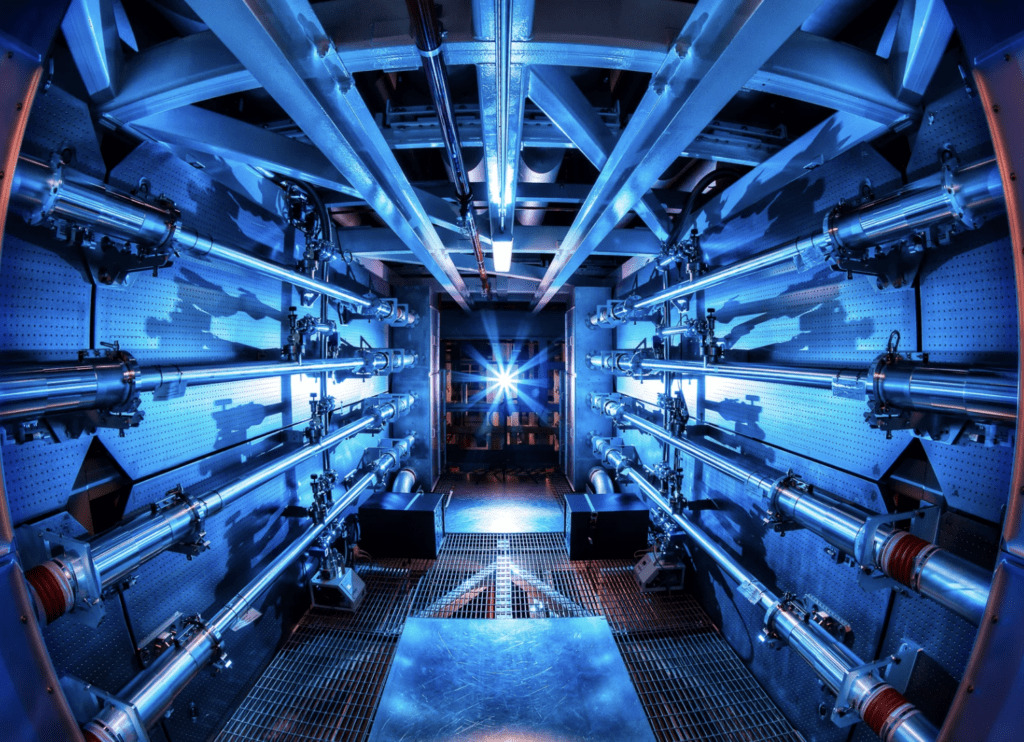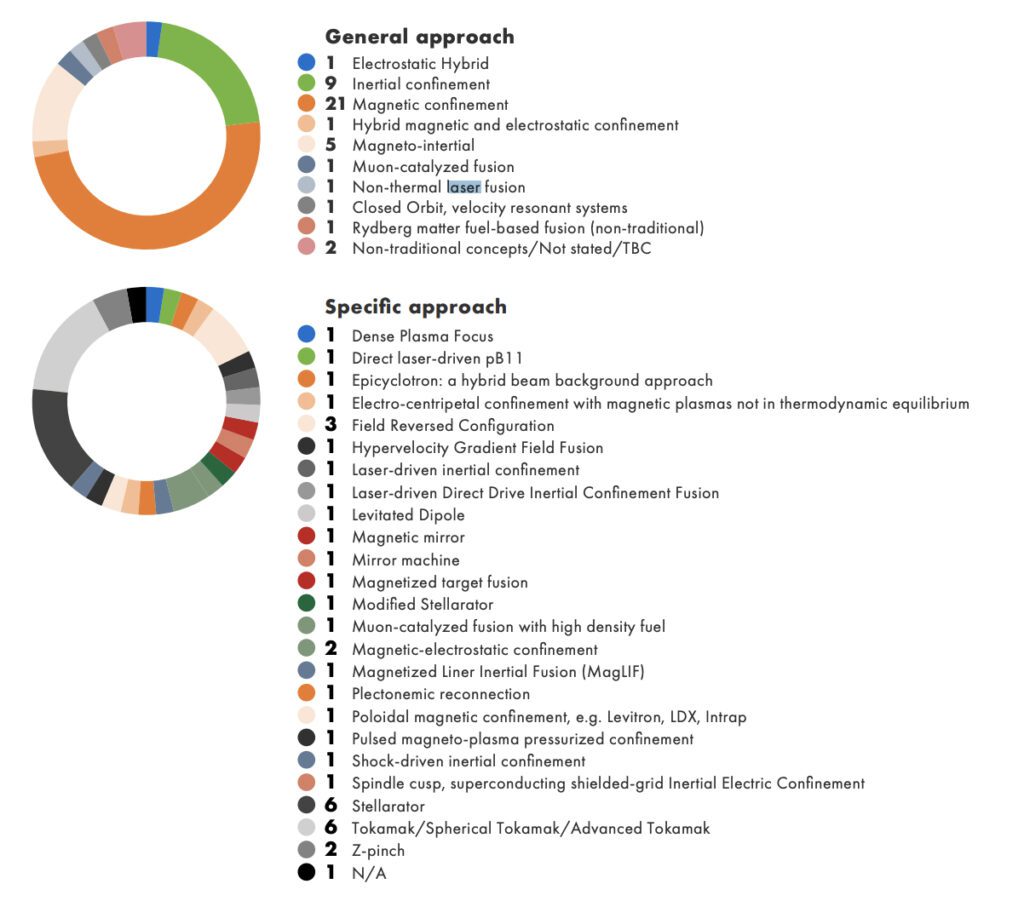Fluor to Design Commercial Laser Fusion Power Plant
Longview Fusion Energy, a firm leveraging the recent fusion breakthrough at the National Ignition Facility (NIF), has secured a contract with engineering, procurement, and construction specialist Fluor to design what could become the world’s first commercial laser fusion power plant.
Longview announced the contract on March 8, noting its historic relevance for laser fusion energy. The contract announced on Friday follows an April 2023 memorandum of understanding with Fluor to support the Orinda, California–based company’s mission to demonstrate the feasibility of laser fusion technology and deliver it to the commercial market starting in the 2030s.
Fusion Ignition Sparking an Industry
Interest in fusion energy has received a marked boost after Lawrence Livermore National Laboratory’s (LLNL’s) NIF in December 2022 demonstrated fusion ignition for the first time in a laboratory setting—an “achievement six decades in the making.”
Fusion happens when the nuclei of light atoms (like hydrogen) overcome the electrical resistance that keeps them apart. This allows the atoms to get close enough, activating the strong nuclear force that “fuses” them together to form heavier elements (such as helium).
But to initiate “fusion,” fuel is subjected to very high temperatures, forming a plasma—a cloud of charged ions—in which fusion reactions take place. During fusion reactions, several particles—including “alpha” particles—are released. These interact with the surrounding plasma and heat it further. The heated plasma then releases more and more alpha particles in a self-sustaining reaction—a process called “ignition.”
NIF’s approach—laser-driven inertial confinement—uses 192 of the “world’s highest-energy lasers converge on a target the size of a peppercorn filled with hydrogen atoms.” In a NIF ignition experiment, a tiny capsule containing two forms of hydrogen, deuterium (D) and tritium (T), is suspended inside a cylindrical x-ray “oven” called a hohlraum.

The hohlraum is heated by NIF’s lasers to temperatures of more than 3 million C, resulting in x-ray heat that ablates the surface of the target capsule. “This causes a rocket-like implosion that compresses and heats the DT fuel to extreme temperatures and densities until the hydrogen atoms fuse, creating helium nuclei (alpha particles) and releasing high-energy neutrons and other forms of energy,” it explains.
If the implosion is symmetrical and the pressure and temperatures in the “hot spot” in the capsule’s center are sufficient, the resulting alpha particles will spread through the heat surrounding cold fuel, triggering a self-sustaining fusion reaction, NIF said. Fusion ignition refers to the moment when the energy from a controlled fusion reaction outstrips the rate at which x-ray radiation losses and electron conduction cool the implosion.
During its pioneering first ignition milestone in December 2022, NIF delivered 2.05 megajoules (MJ) of energy on an ignition target, producing 3.15 MJ of fusion energy yield. It has since conducted three more ignitions. It achieved a record-breaking yield of 3.88 MJ during the second ignition in July 2023, and it set a new record for laser energy, firing 2.2 megajoules of energy (with a yield of 3.4 MJ) in October 2023. While NIF’s laser is capable of higher energy without fundamental energy, the facility has been striving to control damage to its optics system, it noted.
Geared Toward Power Plants
Longview’s laser fusion power plants are based directly on the experimental demonstration of fusion ignition at NIF. The company is notably headed by Dr. Edward Moses, former NIF & NIF Photon Science principal associate director, who managed the design and construction of the NIF from 2007 to 2013. Under Moses, NIF began full operations in March 2009 and quickly set world records for neutron yield from laser-driven fusion fuel capsules and laser energy delivered to inertial confinement fusion (ICF) targets. Moses and former NIF construction/project manager Valerie Roberts announced Longview’s launch days after NIF’s 2022 breakthrough.
“The NIF, the world’s most energetic laser, squeezes together a type of hydrogen so that it becomes 100 times denser than lead and at a temperature of 100 million degrees, bringing star power to earth,” the company has said. Longview’s power plants “will combine the NIF’s laser fusion breakthrough with modern, efficient lasers and a patented design to replicate these conditions several hundred times a minute—similar to the repetitive pulses in a car engine but delivering over one million horsepower,” the company has said.
“We are building on the success of the NIF, but the Longview plant will use today’s far more efficient and powerful lasers and utilize additive manufacturing and optimization through [artificial intelligence],” Roberts, who serves as Longview’s Chief Operating Officer, said on Friday.
Longview notes it is the only fusion energy company using NIF’s proven indirect-drive approach, where light is converted to x-rays to squeeze atoms. The Fusion Industry Association, in its July 2023 global fusion roundup, suggests that at least nine companies are pursuing an inertial confinement general approach.
At least two other U.S. startups—Focused Energy and LaserFusionX—are developing direct drive systems, and another, Xcimer Energy, has proposed a hybrid indirect-direct system. The DOE’s May 2023—announced $46 million tranche selected Xcimer was the only laser inertial confinement fusion along with seven other fusion companies for its $46 million tranche of funding under the agency’s Milestone-Based Fusion Development Program.
Xcimer was notably the only laser inertial confinement fusion technology selected as part of the DOE’s eight Milestone-Based Fusion Development Program projects announced in May 2023. Xcimer is looking to reduce laser costs dramatically and plans to resolve major engineering challenges and, ultimately, to build a fusion pilot plant by the 2030s. Meanwhile, Japanese firm Blue Laser Fusion (BLF) is also pursuing laser inertial confinement, leveraging technology developed by Osaka University. BLF plans to complete its first prototype in 2025 and demonstrate a commercial-ready fusion reactor by 2030.

The Fusion Industry Association reports that at least 25 companies “think the first fusion plant will deliver electricity to the grid before 2035.” It notes: “Companies are increasingly confident of meeting their ambitious goals. That will require focus on mid-term milestones, embracing risk and parallel pathways, new partnerships, and (crucially) more resources.” So far, at least one company, Type One Energy Group, has announced a potential site for its stellarator fusion prototype at Tennessee Valley Authority’s Bull Run Fossil Plant in Clinton, Tennessee, a shuttered coal plant.
No Need a Physics Demonstration Facility
“Unlike other approaches, Longview does not need to build a physics demonstration facility, and, with its partner Fluor, can focus on designing and building the world’s first laser fusion energy plant to power communities and businesses,” Longview said on Friday.
Fluor, which has “expertise in the energy industry and modern modular construction methods, will design the Longview plant to ensure the delivery of carbon-free, safe, and economical laser fusion energy to the marketplace,” it added.
Longview suggests a fusion pilot plant, which will initially operate at 50 MWe, may deliver electrons to the grid by the early 2030s. It plans to penetrate the market between 2030 and 2050 with a 440-MWe capability.
—Sonal Patel is a POWER senior associate editor (@sonalcpatel, @POWERmagazine).